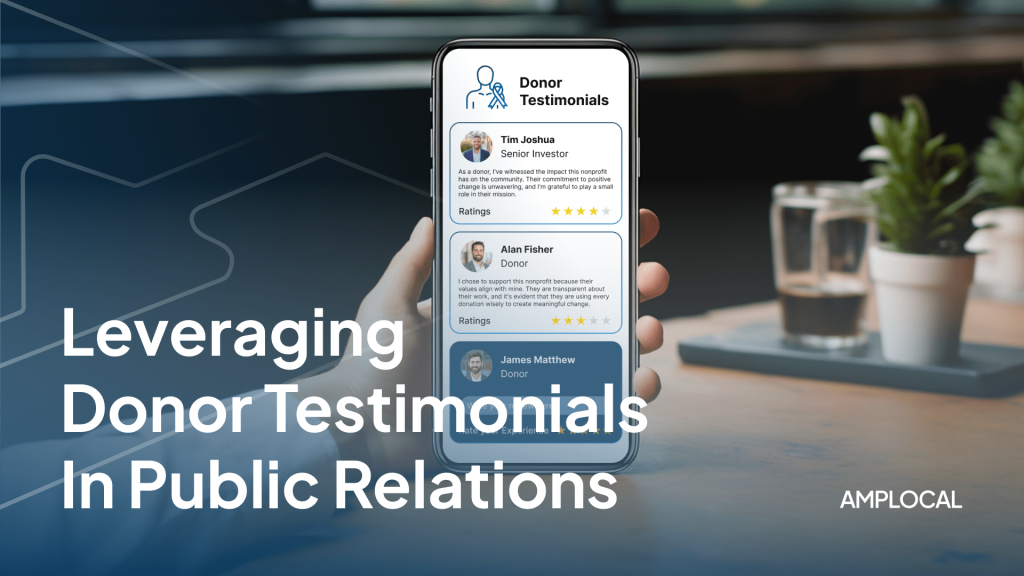Leveraging Testimonials in PR for Nonprofits
In the dynamic realm of nonprofit Public Relations (PR), the role of testimonials in PR has become increasingly significant. Historically, testimonials were primarily used in the commercial sector. However, their integration into the nonprofit sphere as a tool for validation and amplification is a more recent trend. Today, testimonials in PR serve as genuine narratives that not only endorse an organization’s mission but also magnify its message.
The Art of Harnessing
Harnessing testimonials in PR isn’t just about gathering feedback. It’s a strategic endeavor. One effective approach is to conduct post-donation interviews, either face-to-face or through digital mediums. These discussions, while informal, should be structured to capture the donor’s authentic sentiments and experiences.
Jane Doe, a PR consultant with a focus on nonprofits, emphasizes the use of open-ended questions to extract more than mere affirmative or negative responses. For instance, instead of querying, “Did our event meet your expectations?”, a question like, “How did our event resonate with your personal values?” can elicit richer testimonials for PR purposes.
Crafting Narratives
After gathering these testimonials, the next phase is molding them into narratives that strike a chord. A well-structured narrative, rooted in testimonials in PR, can act as a mini-case study, highlighting the tangible effects of a donor’s generosity. For example, a testimonial from a benefactor who championed a literacy initiative can be juxtaposed with anecdotes from beneficiaries, painting a comprehensive picture of the impact.
Legal and Ethical Aspects
Testimonials in PR, while powerful, come with their set of legal and ethical obligations. It’s imperative to obtain explicit consent from donors before featuring their testimonials in any PR campaign. Moreover, while refining the message for clarity is acceptable, altering its essence is not only unethical but could also lead to legal complications.
Challenges and Testimonials
Nonprofits often grapple with challenges like resource constraints and potential donor skepticism. Here, testimonials in PR can act as genuine endorsements, but they should be employed judiciously. Integrating testimonials into a broader PR strategy, which encompasses data-driven insights and community engagement, is often the most balanced approach.
Authenticity in Testimonials
In today’s saturated information age, authenticity is a key differentiator. This holds especially true for testimonials in PR within the nonprofit sector. Genuine testimonials can pierce through the clutter, offering a human touch that mere statistics might fail to provide.
Sarah Williams, a nonprofit marketing connoisseur, opines, “In PR, authenticity is the bedrock of trust. When prospective donors encounter genuine stories from real contributors, their engagement likelihood amplifies.”
Multimedia
With the digital revolution, testimonials in PR aren’t restricted to textual content. Video testimonials, for instance, can be exceptionally compelling, providing a dynamic medium to showcase donor experiences and the nonprofit’s influence.
Measuring the Impact
While testimonials in PR can be emotionally evocative, gauging their tangible impact on PR endeavors is crucial. Tools like Google Analytics can monitor the engagement metrics associated with your testimonials, offering insights to refine your strategy.
Addressing Skepticism
In a world where ‘fake news’ has become a buzzword, skepticism is a challenge that nonprofits must navigate carefully. This is where the legal and ethical considerations mentioned earlier come into play. Transparency is key. Providing a clear path for interested parties to verify the stories or data behind your testimonials can go a long way in building trust. Moreover, in times of crisis or misinformation, having a robust crisis communication strategy becomes indispensable to maintain the organization’s credibility and trustworthiness.
Conclusion
In essence, donor testimonials aren’t mere accolades; they narrate tales of transformation, influence, and community cohesion. They possess the potential to endorse your mission, personify your organization, and galvanize action. As we navigate the digital era, the strategic employment of testimonials in PR will continue to evolve, presenting novel opportunities for nonprofits to connect, engage, and inspire.
FAQs:
1. Why are testimonials in PR crucial for nonprofits? Testimonials in PR offer authentic narratives that not only endorse a nonprofit’s mission but also magnify its message, fostering trust and credibility.
2. How can nonprofits effectively gather testimonials? Nonprofits can harness testimonials through post-donation interviews, feedback forms, or digital platforms, ensuring they capture genuine sentiments and experiences.
3. Are there any legal considerations when using testimonials in PR campaigns? Yes, it’s essential to obtain explicit consent from donors before featuring their testimonials in PR campaigns. Altering the essence of their message can also lead to ethical and legal complications.
4. How do testimonials enhance authenticity? Genuine testimonials provide a human touch, offering real stories from real contributors, which can resonate more deeply with potential donors and the community.
5. Can testimonials in PR be multimedia? Absolutely! With the digital age, testimonials in PR can be both textual and visual, with video testimonials offering a dynamic way to showcase donor experiences and the nonprofit’s influence.




